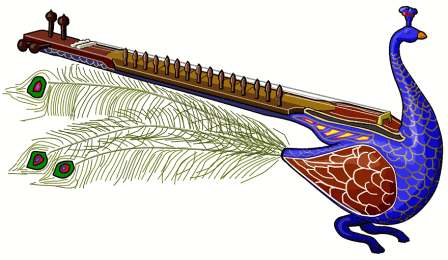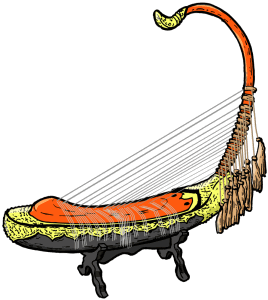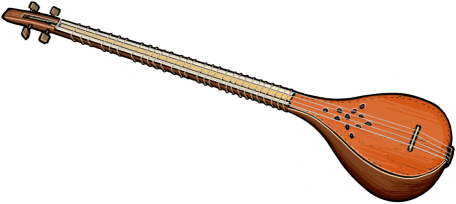User:ApeKattQuest, MonkeyPython/Spike-fiddles and other Riddles: Difference between revisions
No edit summary |
(→Rebab) |
||
| Line 6: | Line 6: | ||
* Stick, small soundbox, spike-fiddle bowed family, chiefly south-east asian - from here evolved all kinds of spike fiddles, including such where the spike is vestigial, also south-eastern europe. |
* Stick, small soundbox, spike-fiddle bowed family, chiefly south-east asian - from here evolved all kinds of spike fiddles, including such where the spike is vestigial, also south-eastern europe. |
||
** to wit the ghijak [https://www.wikidata.org/wiki/Q54995817 wd] [https://en.wikipedia.org/wiki/Ghijak en] [https://musicbrainz.org/instrument/0d766870-3021-47ce-bd51-78d2d2484e1b mb] and the Indonesian Rebab, probably the chinese huquin as well. |
** to wit the ghijak [https://www.wikidata.org/wiki/Q54995817 wd] [https://en.wikipedia.org/wiki/Ghijak en] [https://musicbrainz.org/instrument/0d766870-3021-47ce-bd51-78d2d2484e1b mb] and the Indonesian Rebab, probably the chinese huquin as well. |
||
* Large, short neck, boat-shaped or indented bowed (but including plucked variant) lutes, chiefly middle-eastern south asian - from here many various folk fiddles, plucked lutes, both of which also inspired evolution of european instruments |
* Large, short neck, boat-shaped or indented bowed (but including plucked variant) lutes, chiefly middle-eastern south asian - from here many various folk fiddles, plucked lutes, both of which also inspired evolution of european instruments. |
||
** herein the sarinda, sarangi, esraj, |
** herein the sarinda, sarangi, esraj, ravaj, among these the guitar and vielle families. |
||
* Medium, varying neck pear-shaped bowed lute, chiefly middle-eastern, european - from here many bowed and plucked families. |
* Medium, varying neck pear-shaped bowed lute, chiefly middle-eastern, european - from here many bowed and plucked families. |
||
** alike kamanche, byzantian lyra |
** alike kamanche, byzantian lyra, presumably sitar, (thus [[User:CatCat/v*na|vina]]) barbat, oud and the actual lute itself. possibly including such as mandolin and balalaika. |
||
<br> |
<br> |
||
Revision as of 16:01, 22 March 2020
Rebab
There is a lot of confusion about instruments named r*bab, historically "rebab" was a generic named for chiefly bowed string instruments, from this evolved also plucked variant (see rubab), originally arabic, it traveled around the world and became the origin of many stringed instrument-families.
There are chiefly 3 large groupings:
- Stick, small soundbox, spike-fiddle bowed family, chiefly south-east asian - from here evolved all kinds of spike fiddles, including such where the spike is vestigial, also south-eastern europe.
- Large, short neck, boat-shaped or indented bowed (but including plucked variant) lutes, chiefly middle-eastern south asian - from here many various folk fiddles, plucked lutes, both of which also inspired evolution of european instruments.
- herein the sarinda, sarangi, esraj, ravaj, among these the guitar and vielle families.
- Medium, varying neck pear-shaped bowed lute, chiefly middle-eastern, european - from here many bowed and plucked families.
- alike kamanche, byzantian lyra, presumably sitar, (thus vina) barbat, oud and the actual lute itself. possibly including such as mandolin and balalaika.
Classification aspect
(make into a table eventually)
Spike-fiddle
Long neck, small soundbox, spike, possibly vestigial:
- Indonesian rebab
- đàn gáo
- đàn hồ
- đàn nhị
- salo/saw lo
- saw sam sai
- saw u
- saw duang
- tro khmer
- tro sau
- tro che
- tro sau thom
- tro u
- tro (research)
- jawza
- konya
- sanxian
- erxian
- huqin (family)
- sihu
- yehu
- dihu
- zhonghu
- banhu
- huluhu
- jinghu
- erhu
- gaohu
- kamancheh
- igil/ikili
- sanshin
- shamisen
- kokyu
- yaylı tambur
- ghijak
- ravanahatha
- haegeum
- (afrikan)
- goje
- njarka
- n'ko
- imzad
Bowed Lute (pear shaped)
Bowl or pear-shaped, (lyra[1]) larger lute-like soundbox, often shorter neck:
- Byzantine lyra/lira
- Gadulka
- gudok
- gusle
- sintir
- guimbri
- cretan lyra
- calabrian lira
- dalmatian lijerica
- kemenche
- pontic lyra(k of the black sea)
- politiki lyra (classical k)
- rebec
- rabel
- dutar
- çifteli
- cobza
- kobza/bandurka
- komuz
- qanbūs/gambus
- gabusi
- tambouras -> eg lutes, baglamas etc.
- pandur etc
- tambur etc
- tanpura etc
- indian lute, sitar
- cittern, gitten, etc guitar
- etc
Bowed/plucked Lute (boat shaped)
Double, two bodied or hollowed out, concave or Boat shape, large soundbox, short neck:
- kobyz
- rubab/rabab (kabuli rebab)
- sarod
- sarangi
- nepalian sarangi (is this really a separate instrument?)
- sarinda
- esraj
- dilruba
- ghaychak
- kyl kyyak
- lyra viol
- viol da gambas
- viol da braccios
- etc
lyre like
it's currently unclear how these belong
- crwth
- rotta
Notes
Rababah - ancient - arabic fiddle -
rebab - medieval - persia
seni rebab - medieval -
kabuli rebab - medieval - arab
rebec - medieval - europe
rebab - modern - indonesia
some interesting https://hu.wikipedia.org/wiki/Reb%C3%A1b_(egy%C3%A9rtelm%C5%B1s%C3%ADt%C5%91_lap)
Evolution Aspect
UNDER CONSTRCTION
| Cell 1 | Cell 2 |
| sarangi wd en mb hindustani classical music, rajasthani folk sarangi, |
 |
| sarinda wd en jira, is related to and may derive from central asian shamans-fiddle qobuz (kobys?) widespread:
rajasthan (surinda) three main strings
manipur north-east india (sananta)
|
 |
| nepali sarangi wd en MB!(?) type of lute, evolved from the <strikeout>rabab</strikeout> includes this and the |
 |
| ghaychak wd en mb jira | cell 2 |
| in its family evolved from the kobyz wd en jira. (kobyz, ghaychak, sarangi) |
 |
| dhodro banam aka Santal lute east & north india (dhodro banam) |
cell 2 |
| Kyl kyyak wd ky en mb! | Cell 2 |
| Cell 1 | Cell 2 |
| Cell 1 | Cell 2 |
| Dramyin, Tungana, Sgrna-snyan mb
|
 |
| Cell 1 | Cell 2 |
| dotara |  |
| svaraj fretless long necked plucked lute from bangladesj, it is a bangl version of the bengali/northindian dotara, it ought to be spelled saraj (see esraj) | Cell 2 |
| esraj a kind of cross between sitar and sarangi, it is a modern variant of dilruba[2] |
 |
| Mandar Bahar nmm wd? mb! bass esraj |
Cell 2 |
| dilruba Dilruba is a compacter, mobiler instrument, is based on the heavier Taus[3] |
 |
| taus |  |
| mayuri-vina |
 |
| yazh |  |
| saung gauk |  |
| Cell 1 | Cell 2 |
| ektara (actually gopichant) |   |
| ektar (actually tumbi) |  |
| dutar |  |
| setar |  |
| bin-sitar | Cell 2 |
| kamaica | Cell 2 |
| ravanhattha |  |
| khuur (mongolian fiddles) |  |
| Cell 1 | Cell 2 |
Geographic Aspect
I'm going to need some kind of map-tool/widget.
https://timesofindia.indiatimes.com/From-Tri-tantri-Veena-to-Sitar/articleshow/21391436.cms and images on https://en.wikipedia.org/wiki/Tritantri_vina and https://en.wikipedia.org/wiki/Setar (compare image on https://en.wikipedia.org/wiki/Sitar ) makes it clear that it is the setar that is evolved from the tritantri veena - the sitar https://beta.musicbrainz.org/instrument/9290b2c1-97c3-4355-a26f-c6dba89cf8ff/ an unrelated (but possible distant cousin) was *named* after the Persian setar.
- ↑ don't confuse with lyre!
- ↑ https://sv.wikipedia.org/wiki/Esraj
- ↑ https://en.wikipedia.org/wiki/Esraj#History